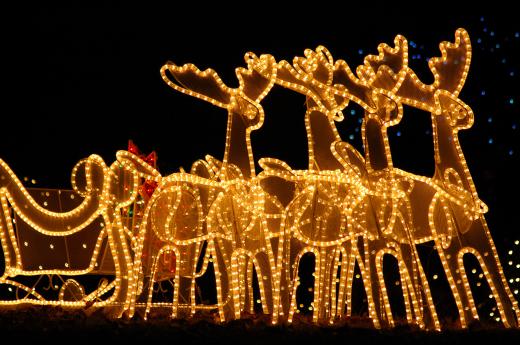A wedge base is a style of light bulb design where wires run from the bulb and up the sides of the base to come into direct contact with the socket. This design is less expensive to produce than other variants, like the Edison screw. Some manufacturers prefer it for certain lighting applications, particularly miniature light bulbs and halogen bulbs, many of which come in the wedge base configuration. Bulbs with this design will not fit in sockets designed for other styles of base.
One of the most common examples of the wedge base is used in Christmas lights, also known as fairy lights. The wires from each light protrude from the base and fold up, along the sides of the wedge. Users can pull on the lights to release them from the socket, and push to insert them, with no need to turn bulbs or use a special device to insert or remove them. These lights are very easy to replace in addition to being highly inexpensive.

Without a wedge base, a light bulb would need a cap to seat it securely in a socket. Caps add materials, which increase the cost of the bulb. They also increase the amount of time needed for construction. For bulk production of extremely small bulbs, this may not be practical, as the per-bulb price to consumers might be more than they are willing to pay. For this reason, manufacturers may opt to produce wedge base components for some fixtures.

Some types of automotive lighting also use this design. It is possible to fit bulbs with multiple filaments, if necessary, to accommodate high and low light settings. These wires run up different parts of the base to avoid crossing and typically the base has a profile that only allows it to be inserted in one direction. This ensures that the wires will not be switched during installation, allowing the light to work correctly.
Lamps and other fixtures designed for wedge base light bulbs may indicate this on their package, and have a distinctive socket. Replacement bulbs for lamps and other items are typically readily available through hardware, home supply, and automotive stores. In some cases it may be necessary to special order a bulb of a particular wattage, or a highly specialized bulb designed for a very specific piece of equipment. Car lights, for example, are often specific to the manufacturer and sometimes different models also have distinct bulbs.
Ever since she began contributing to the site several years ago, Mary has embraced the exciting challenge of being a About Mechanics researcher and writer. Mary has a liberal arts degree from Goddard College and spends her free time reading, cooking, and exploring the great outdoors.

